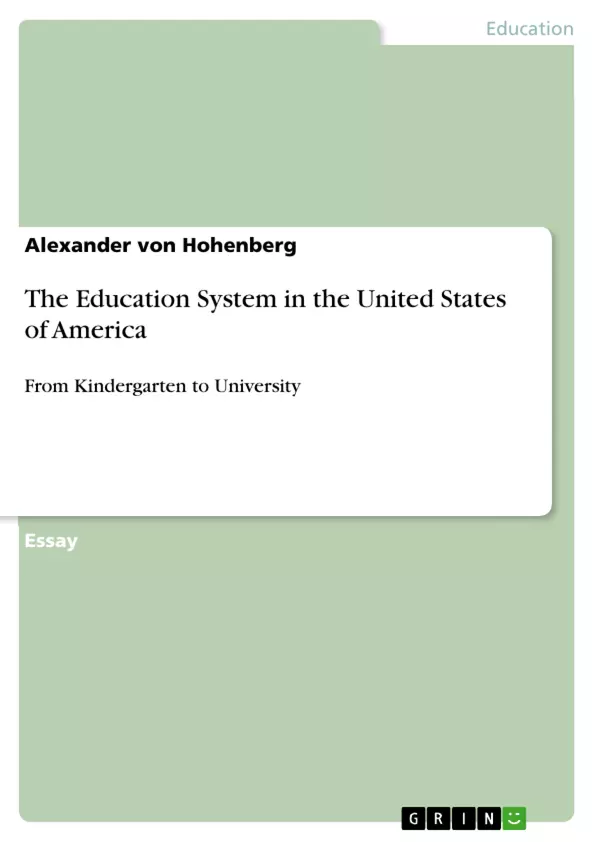Many international students, who visit America for the first time and attend a school there, wonder about the prior education of their classmates. As there are many variations of the school system from state to state, the education system seems to be a bit confusing. Additionally, the structures and procedures at American universities differ from other systems, such as the German one.
This essay will give you a brief overview of the U.S. education system, including important Acts as the “No Child Left Behind” Act and funding as well as admission to Universities.
Inhaltsverzeichnis (Table of Contents)
- I. Introduction
- II. Overview of the American Education system
- A. General information
- B. Primary and secondary schools
- C. The "No Child Left Behind Act"
- III. Higher education
- A. Public vs. Private Universities
- B. Admission and funding
- IV. Conclusion
Zielsetzung und Themenschwerpunkte (Objectives and Key Themes)
This essay aims to provide a comprehensive overview of the U.S. education system, highlighting key features such as the structure of primary and secondary schools, the impact of the "No Child Left Behind Act," and the differences between public and private universities. The essay explores funding, admission processes, and the overall structure of the education system.
- The decentralized nature of the American education system and its implications
- The role of the "No Child Left Behind Act" in improving educational standards
- The distinction between public and private universities in the U.S. context
- The importance of funding and admission processes in American higher education
- The impact of the education system on overall societal development
Zusammenfassung der Kapitel (Chapter Summaries)
The essay begins by introducing the American education system and its distinctive features compared to other systems like the German one. Chapter II explores the general structure and characteristics of primary and secondary education in the U.S., highlighting the absence of a national curriculum and the role of individual state education departments. The chapter also discusses the funding model for public schools and the role of school boards in setting guidelines. Chapter III focuses on higher education, exploring the differences between public and private universities. It examines admission processes and the importance of standardized tests, GPA, and extracurricular activities for university entry. This chapter also touches on the issue of funding for higher education and its implications for accessibility and equity.
Schlüsselwörter (Keywords)
The primary focus of this essay revolves around the U.S. education system, with a particular emphasis on the "No Child Left Behind Act", the differences between public and private institutions, and the funding and admission procedures for higher education. The essay delves into the educational structure from kindergarten to university, highlighting aspects like standardized tests (ACT/SAT), GPA, and the overall impact of the education system on societal development. Key terms like "educational reform," "state funding," and "student-faculty ratio" provide a comprehensive understanding of the main themes discussed in this work.
- Citation du texte
- Alexander von Hohenberg (Auteur), 2010, The Education System in the United States of America, Munich, GRIN Verlag, https://www.grin.com/document/158726



